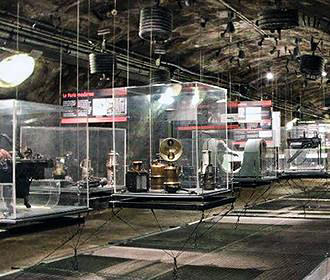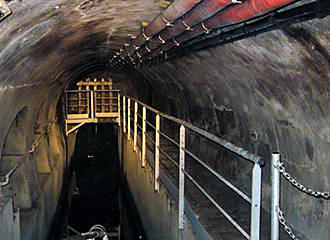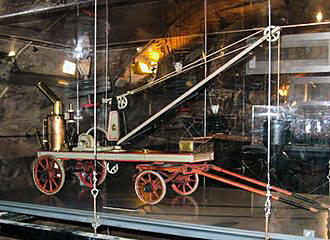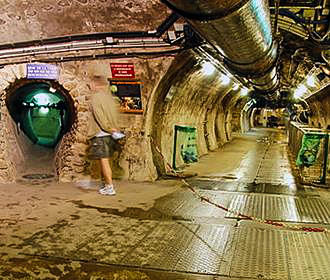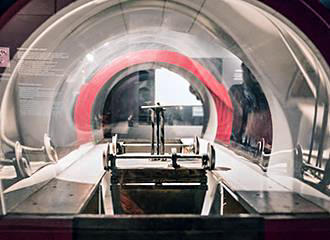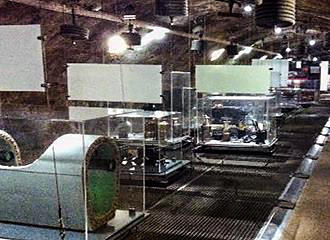Musee des Egouts Sewers museum in Paris
The Musee des Egouts literally translates to Museum of Sewers and is an unusual type of museum to visit whilst you are on holiday in Paris, but provides a fascinating look at how the sewage system in Paris developed from its very humble beginnings through to present day.
First a little bit of history
Up until the Middle Ages, the drinking water for Paris residents came from the River Seine and the wastewater was poured onto fields or unpaved streets, but because the waste water made its way back to the river, it inevitably caused a lot of health issues for anyone in Paris.
And so, Philippe Auguste, who was the King of France from the year 1180 right through to 1223, gave orders for the streets of Paris to be paved and have drainage gullies put in, which meant that Paris has had some form of sewer system and drainage for wastewater from the 13th century.
It was then in the 1300s that major channels were built and the first stone walled sewer was built in Rue Montmartre, and this sewer was to collect the wastewater and take it to a brook, rather than ending up back in the same place on the River Seine. These efforts for better hygiene in the city progressed, including the building of vaulted sewers right up until the 1600s.
But the first covered sewers were only introduced during the reign of Napoleon Bonaparte, with a network of vaulted tunnels built beneath the city of Paris, however, there were initially some problems with this, due to lack of being able to clean them.
Yet in the year 1850, Eugene Belgrand, an engineer, designed the present day sewer system along with Baron Haussmann, who developed a way of separating the drinking water and wastewater and being able to clean the sewers.
By the year 1860 the sewer network was around 179km in Paris and later on this century it covered over 600km and each street had its very own sewer, which worked on gravity where it could, rather than using pumping stations.
Obviously there have been major improvements over the years and incredibly today, the sewage network in Paris covers more than 2,400km of tunnels that crisscross the city, which is equivalent to the distance between Paris and Istanbul!
About the Musee des Egouts Sewer museum
Dedicated to the sewer system of Paris, the capital city of France, this is a fascinating trip under the streets where you can learn more about the history of Paris and how things progressed, in order to provide better hygiene for the residents and visitors coming to this famous city of lights.
Initially city officials and then tourists used to be carried through the sewer tunnels by carts, but these were replaced by carriages drawn by a locomotive, and then by boats, yet the majority of the tunnels are now only accessible to designated workers, who continue the marvellous job of ensuring the city is safe and hygienic.
But since the opening of the Musee des Egouts de Paris, which is located on the Left Bank of the River Seine under Quai d'Orsay, there are now dedicated areas purely for people to visit this unusual museum in Paris who guided by actual sewer workers.
So today you will be able to discover even more about how the system was first started, get to learn about Aubriot, who was the designer of the first vaulted sewer, Eugene Belgrand, who was the engineer that was responsible for the current sewer network, and Baron Haussmann, who developed a way of separating the drinking water and the wastewater.
There are different galleries with many unusual exhibits on display, such as the Eugene Belgrand Gallery, which shows some of the machinery that was used in the past and how things progressed to the types of machinery currently used.
Other galleries present the water cycle and the jobs of the Paris sewer workers, plus on the tour you go down into the heart of the network where you can get to see down from the floor to the Avenue Bosquet sand trap collector and the storm overflow from the Place de la Resistance.
For most of us, we take the water and sewage systems in cities and towns for granted, so the Musee des Egouts sewer museum will provide a fascinating look at history from a completely different perspective.
And when on the tour you will also be able to discover an exhibition of the water system, which includes its purification systems, plus the marvels of engineering with displays of machines and models that illustrate techniques that have been used through the ages.
In addition, you can discover how Paris has dealt with everyday aspects of life throughout the centuries and how man power has also evolved for the maintenance of the very essential water cycle with different video terminals.
The tour, which lasts approximately just over an hour starts with a film, continues with historical photos and displays and ends with a designated walk through the maze of tunnels, which you are guided through by one of the sewer workers.
Along the way you will be able to get to see place names like that of the Place de la Resistance and house numbers for the properties located above where you are walking, all before reaching a gift shop at the end of the tour.
Now we can appreciate that the very idea of visiting the sewers of a major city could send shivers through some and may not be very appealing to others, but it is definitely one of the unusual tourist attractions in Paris, and was a first in terms of its originality and historical value.
So if you would like to see Paris as you would never have imagined it, yet are willing to put up with a little bit of a smell, then it is well worth a visit.
Visiting the Musee des Egouts museum in Paris
The Musee des Egouts de Paris is open every day except for Thursdays, Fridays and on all National French holidays, plus it is always closed for a minimum of two weeks in January for maintenance.
From the start of May to the end of September this unusual museum in Paris is open from 11am through to 5pm, however, during any other time it closes at 4pm and the last entrance is one hour before closing.
As of 2018 the cost of entry to Egouts is €4.20 per person, however, children between the ages of 6 and 16 pay a reduced amount of €3.40, and it is free to children under the age of 6, although it is not perhaps one of the ideal places to visit with very young children.
However, if you are in a large group or require a guided tour, then you have to make arrangements and a reservation, which can be done via telephone or email.
The entrance to the Musee des Egouts is actually a ticket booth, which is like a hexagon shaped kiosk with the blue banners on the bottom panels saying Visite des Egouts de Paris on them. This is located on ground level on the Left Bank of the River Seine between the river and the Quai d'Orsay in the 7th Arrondissement of Paris, close to the Musee du Quai Branly, the famous landmark of the Eiffel Tower and the Trocadero Gardens opposite.
Access to the Musee des Egouts
This museum is also easy to reach with public transport in Paris and the nearest Metro station is the Alma-Marceau stop serving line 9 located on the opposite bank of the River Seine, yet for those of you that need an RER train station, the closest is the Pont de l’Alma stop via line C.
Alternatively the bus lines 42, 63, 72, 80 and 92 will also get you within easy walking distance of the Paris Sewers Museum, plus the Bateau Mouches cruise boats also have their dock near to the Pont d’Alma on the River Seine.
In fact, it is the Pont d’Alma tunnel where Princess Diana tragically died and you can see the unofficial memorial called the Flamme de la Liberte nearby, if this is something else of interest to you whilst on holiday in Paris.
